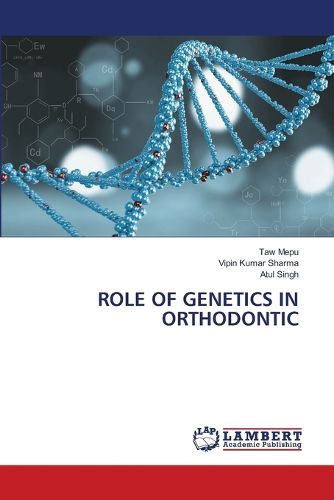Readings Newsletter
Become a Readings Member to make your shopping experience even easier.
Sign in or sign up for free!
You’re not far away from qualifying for FREE standard shipping within Australia
You’ve qualified for FREE standard shipping within Australia
The cart is loading…






This title is printed to order. This book may have been self-published. If so, we cannot guarantee the quality of the content. In the main most books will have gone through the editing process however some may not. We therefore suggest that you be aware of this before ordering this book. If in doubt check either the author or publisher’s details as we are unable to accept any returns unless they are faulty. Please contact us if you have any questions.
Malocclusion results from the interaction between genetic and environmental factors, making it essential for orthodontists to understand this interplay for effective diagnosis and treatment. Awareness of genetic influences helps differentiate inherited malocclusions from those caused by environmental factors, facilitating personalized care. Most malocclusions are polygenic/multifactorial, though some specific cases may be strongly influenced by single genes. Heritability estimates vary, with craniofacial traits generally showing higher heritability than dentoalveolar traits. While fluctuating asymmetry reflects environmental stress, genetic factors influence an individual's resilience. Contrary to the belief that genetically caused malocclusions are harder to treat, environmental changes can positively affect polygenic traits. Future research into how environmental factors affect gene expression will enhance treatment strategies, promoting more effective and personalized orthodontic care.
$9.00 standard shipping within Australia
FREE standard shipping within Australia for orders over $100.00
Express & International shipping calculated at checkout
This title is printed to order. This book may have been self-published. If so, we cannot guarantee the quality of the content. In the main most books will have gone through the editing process however some may not. We therefore suggest that you be aware of this before ordering this book. If in doubt check either the author or publisher’s details as we are unable to accept any returns unless they are faulty. Please contact us if you have any questions.
Malocclusion results from the interaction between genetic and environmental factors, making it essential for orthodontists to understand this interplay for effective diagnosis and treatment. Awareness of genetic influences helps differentiate inherited malocclusions from those caused by environmental factors, facilitating personalized care. Most malocclusions are polygenic/multifactorial, though some specific cases may be strongly influenced by single genes. Heritability estimates vary, with craniofacial traits generally showing higher heritability than dentoalveolar traits. While fluctuating asymmetry reflects environmental stress, genetic factors influence an individual's resilience. Contrary to the belief that genetically caused malocclusions are harder to treat, environmental changes can positively affect polygenic traits. Future research into how environmental factors affect gene expression will enhance treatment strategies, promoting more effective and personalized orthodontic care.